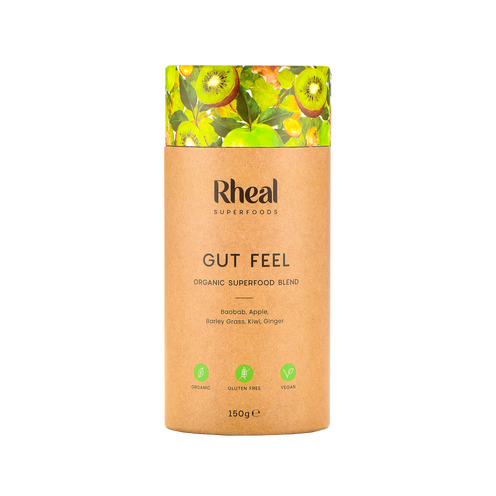What is menopause?
Menopause is a biological process that marks the end of a person’s menstrual cycles. It typically occurs around the age of 45 to 55, but the exact timing varies for everyone.
According to the Royal College of Nursing, around 13 million people in the UK are currently menopausal or perimenopausal. And despite a large number of the population undergoing these natural changes, there is still a lack of proper education, training and social awareness, all of which has led many of those experiencing menopause to feel ignored or overlooked.
In a UCL-led study, it was found that 90% of postmenopausal women were never educated about menopause and 60% started researching themselves once their symptoms had begun. During menopause, fewer hormones are produced, particularly estrogen and progesterone, leading to various changes throughout the body. Common symptoms include; mood swings, hot flushes, night sweats and trouble sleeping, vaginal dryness, loss of libido, anxiety and joint pain.
While menopause is a normal part of aging, it can bring about challenges for some women, but there are various treatments and lifestyle changes available to help manage symptoms and maintain overall well-being, both physically and mentally.
What is perimenopause?
Perimenopause is the transitional stage leading up to menopause. It usually begins several years before menopause but can be up to 10 years prior, it just depends on the individual. During perimenopause hormone levels fluctuate, causing irregular menstrual cycles and various symptoms similar to those experienced during menopause, such as hot flushes, dry skin, mood swings and difficulty sleeping. Perimenopause ends when a woman has gone 12 consecutive months without a menstrual period, marking the onset of menopause.
What is Hormone Treatment Therapy (HRT)?
Essentially, HRT is a medical treatment that involves supplementing the body with hormones, such as estrogen and progesterone, to alleviate symptoms associated with menopause or perimenopause. There are many different types of HRT treatments, including different hormones as well as different formats (gels, pills, patches etc), but these will not be suitable for everyone and so it is best to speak to your doctor and get their advice.
Q&A with Dr Faiza Khalid
Dr Faiza Khalid is a doctor in functional medicine and has been qualified as a doctor for 20 years. She lives in the North East of England with her 2 children and husband.
After seeing her patients at her GP practice struggling with chronic illness, she went to pursue further training, and learned more about functional medicine which allowed her to take a closer look at the root cause of diseases.
Dr Faiza Khalid worked closely with Charlotte and Sean on the development of Balance Tonic to ensure the blend was suitable for helping everyone to balance their hormones and reduce stress.
Recently we asked our customers if they had any questions for Dr Faiza Khalid, specifically relating to hormone health and menopause. We’ve collated our most common questions together and she’s answered them below. Grab your Balance Tonic and have a read!
Q: The topic of female health is sadly still quite taboo in areas, why do you think it has been such a difficult subject to talk about in society?
“I think there is such a stigma around female health and I know from my own training that menopause was really brushed over. It was very much along the lines of ‘this is the menopause, here are a few symptoms, here are one or two things you can do’ and then women were more or less told to get on with it. I think now the environment is changing, we want to have our say, we want to know why this is happening. We don’t have to just get on with it anymore, that is changing.”
Q: What are some lifestyle changes you would recommend to help with symptoms of the menopause?
“There are lots of things we can do to support ourselves whilst we go through menopause..."
#1 Sleep
One of the most important, and often overlooked, things is sleep and setting up the right environment for sleep. We should be turning off our devices at least 90 minutes before bed and avoiding artificial light if we can, perhaps trying blue light filtering glasses or screens for devices. It is important to establish a sleep routine; try going to bed at the same time every night and waking up at the same time in the morning, even if you’ve not managed to sleep very well that night.
The aim is to regulate your sleep-wake cycle. This is important because when we are asleep, this is when we recuperate, particularly in the brain. Within our brains, we’ve got a special lymphatic system called the ‘glymphatic system’ which takes away all the toxins that we have accumulated over the course of the day, and this system primarily only works when we are asleep. Sleep is also important to regulate the hormonal axis known as the Hypothalamic-pituitary-adrenal axis.
#2 Exercise
As well as sleeping, there are other things we can do to help ourselves. An example of this is exercise - getting enough movement during the day. This doesn’t have to mean heading to the gym to complete a vigorous workout - getting in your steps, ideally 10,000, each day is an easier thing to do and a really great start.
#3 Stress management
Stress is everywhere, and managing stress is really key to managing the hormone fluctuations as they happen in our bodies. Ways we can do this can include taking time to rest and relax, spending time in nature, getting creative, chatting with friends and family (for more natural ways to help reduce stress, see this article).
#4 Diet changes
There are a few things I have learned over the many years of studying functional medicine. One of these is the importance of adding adaptogens into your diet. This is why when I was formulating Balance Tonic with Charlotte and Sean, I was keen to include Ashwagandha and Maca Root. These two are really key because they help us to become more resilient to stress and the fluctuations in our hormones.
#5 Breathing
Something I teach my clients when they are struggling with stress is the 5-5-7 breath technique. If you can do this for 2 minutes when you wake up, before you eat your main meal and before bed, you will find this helps to alleviate the stress response that drives the cortisol and adrenaline surge in the body. It’s really quite simple, you breath in for 5 seconds, hold your breath for 5 seconds and exhale for 7 seconds. And doing that for about 10 rounds (about 2 minutes) should really help. This is great because it is free and accessible wherever you are and my clients find it makes a world of difference.
Q: Do you have any recommendations for anyone who is struggling with symptoms of the perimenopause or menopause and cannot have Hormone Therapy Treatment (HRT) for whatever reason?
“Although I can’t speak to your personal circumstances, I can give some general advice. Firstly, I would speak to your Doctor and ask if they recommend any other ways to help alleviate your symptoms if HRT is not something they recommend.
Additionally, some easy things we can all do is to look at what we are putting on our plate. Focus on a wholefood, plant-based diet. You do not need to go completely plant-based if you don’t want to, but look at bringing in more diversity, more colours to your plate and really do try and eat the rainbow everyday.
Another way is to bring adaptogens into your diet. If you haven’t already given it a go, try Balance Tonic and be consistent with it - everyday. Balance Tonic contains a couple of adaptogens as well as Wild Blueberries and Hibiscus, which are all really great.”
Q: Can you tell us more about Balance Tonic and how the five ingredients in Balance Tonic actually work?
“When we formulated Balance Tonic, we were really focused on female health and in particular, hormonal health. The brilliant thing about Balance Tonic is that there are only five ingredients and they are all superfood powerhouses. What you see on the tub is what you get, there are no additives, natural flavourings or artificial sweeteners, and we chose only to put 5 ingredients in this blend so that each ingredient has maximum impact and you get the most benefit from each ingredient too.
The first three ingredients, Blueberry, Hibiscus and Baobab, are all really high in Vitamin C. Vitamin C is essential to help us absorb iron, because some of us lose a lot of iron through monthly menstruation, and certainly through the perimenopause, a lot of people will have heavier bleeding and be losing a lot of iron that way."
Blueberries 🫐
At the time of developing Balance Tonic, I was pretty excited about wild blueberries and their high antioxidant score. Antioxidants are incredibly important to have in our diet because they fight oxidative stress, and this stress creates free radicals and affects every tissue and organ in our body in a harmful way. Blueberries can really help to mitigate that.
Hibiscus 🌺
Hibiscus is fantastic, it's high in Vitamin C, which is great for us as we're getting older, to support hair, skin and nails for collagen production. Not only that, but hibiscus is great for those going through the perimenopause and the menopause because studies have shown it can improve your lipid profile and to a small degree, bring down your blood pressure too. People in South East Asia drink hibiscus tea every day to support themselves - it’s a unique and versatile ingredient!
Baobab 🍈
The Baobab plant is one of the most nutrient-dense foods on the planet and is rich in lots of essential vitamins such as Magnesium, Potassium and Vitamin C. Baobab provides 7-10 times more Vitamin C than oranges. This high Vitamin C content helps to absorb iron from our diet, and prevent iron deficiency.
Ashwagandha & Maca Root 🫚
These two ingredients are really key because they are adaptogens. They help us to become more resilient to stress and hormone fluctuations that of course can occur during the monthly cycle and the menopause.
Q: Is Ashwagandha safe to use over long periods of time?
“It is fine to take Ashwagandha daily and use it long term. But like with any addition to your diet, I think it is quite wise to take occasional breaks from adaptogens for long-term efficacy reasons. However, there is nothing to say that you can’t use it on a daily basis longer term, but if you’re unsure or if you have a specific underlying medical issue, or you’re on medication, then just make sure you consult with your own GP or nurse.”
References



